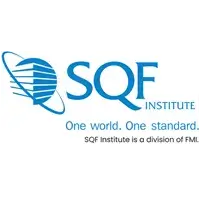

COMPLIANCE CERTIFICATION
Fundamentals SQF
SQF (Safe Quality Food) ensures the safety and quality of food products throughout the supply chain. Available for the different SQF food categories, including Primary Production, Manufacturing, Packaging, Storage, and Distribution, structured in two levels: the Basic is focused on the development of good implementation tools for food safety for new business, regulatory compliance, good practices, and system elements, the Intermediate is based on the Basic Code, includes implementation tools, intermediate level close to a food safety management system.
Code
The codes for the different SQF food categories are targeted to meet various needs.
- Primary production
- Food manufacturing
- Packaging
- Warehousing and Distribution
SQF Code Requirements
To obtain SQF certification, the site must document and implement the system elements and relevant modules of the Code in two stages:
1. Document the SQF system:
Prepare policies, procedures, work instructions, and specifications that comply with the code's system elements and GMP modules. In other words, "Say what you do."
2. Implement the SQF system:
Once you implement the policy, prepare procedures, work instructions, and specifications, and keep records to demonstrate compliance with the relevant modules. In other words, "Do what it says". The SQF Institute recommends that a minimum of two months of records be available before conducting an on-site audit.
Categories and SQF CodesF
Fundamentals of food safety:
| Code | Level | Categories | Module |
| Primary Production | Basic | All categories of the primary food sector. | Corresponding Good Manufacturing Practice (GMP) Modules |
| Primary Production | Intermediate | All categories of the primary food sector. | Corresponding Good Manufacturing Practice (GMP) Modules |
| Manufacturing | Basic | All categories of food manufacturing, warehousing, and distribution are included. | Corresponding Good Manufacturing Practice (GMP) Modules |
| Manufacturing | Intermediate | All categories of food manufacturing, warehousing, and distribution are included. | Corresponding Good Manufacturing Practice (GMP) Modules |
Certification of compliance
with regulations, recognized by SQF


Benefits
Its focus is on the implementation of food safety, the essential requirements for creating a sound food safety management system, through the following benefits:
The basic level focuses on small businesses implementing essential food safety practices.
The intermediate level provides more advanced controls and prepares companies for higher-level certifications.
It has modules that establish the requirements for food safety.
Promotes consumer confidence in food safety and security.
How do you obtain a regulatory compliance certification?
The certification process pays attention to every detail to make sure that the company duly complies with all of the standard’s requirements.
1
Quotation and contract signing
2
Audit planning and execution
3
Closure of non-conformities
4
Certification Committee and Certificate Issuance
